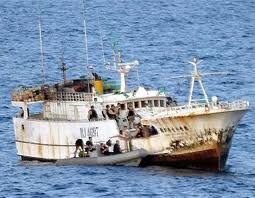
February 2011
Thanks to a change in strategy, many in the maritime security industry are speculating that Somali pirates may have the capability of increasing their range of operation.
Somali pirates have recently been seen using merchant vessels they have hijacked as mother ships, from which they launch attacks. Mother ships are able to cover larger distances because they’re bigger, can hold larger stores of fuel, and can withstand storms on the open water. The pirates force the captured crew to continue operations and maintenance aboard the hijacked vessel.
Noel Choon, the International Maritime Bureau’s head of Asian region, explained how the advantage is a real game change: “Their [original] boats have limitations. They can carry extra drums of fuel, but they are very dependent on the weather. Can you imagine a small boat being caught in a storm in the middle of the ocean?” he said.
Now that they can go further, Chong fears that they will expand their grip to include more of the Indian Ocean, and even parts of Southeast Asian waters. “If they move further, they will reach Sri Lanka and eventually the Straits of Malacca. Two years ago, nobody would have predicted that they would reach India.”
With this in mind, IMB has updated their advice to cargo vessels to be wary only of small vessels. Now, because pirates are using hijacked ships as bases, any ship can potentially be a sign of pirates.
Merchants are advised to be highly suspicious of merchant vessels lowering small skiffs into the water.